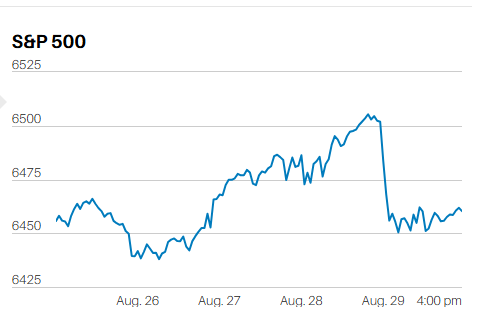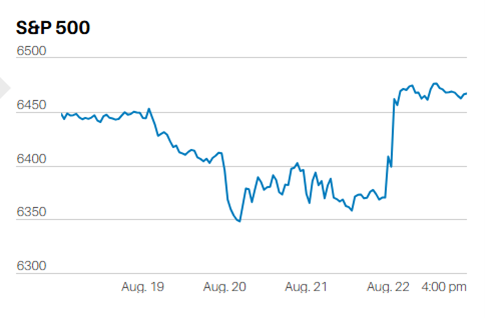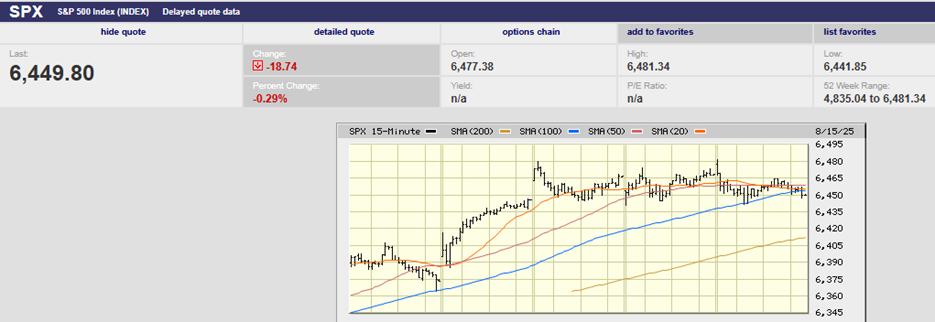Earnings estimates are still too high. Will the downtrend continue?

Market Update
The S&P 500 lost 0.2% last week to close at 3844.82. The Nasdaq fell 1.9% and the Dow rose 0.9%. Bond prices fell as yields rose. The dollar gained as well. Rising yields and a stronger dollar are negatives for U.S. stocks. Yield is the cost of money. People and businesses can’t borrow as much when the cost of money rises. Less borrowing means lower consumption. A stronger dollar means less revenue for U.S. companies as the exchange rate works against them. S&P 500 companies get about 40% of revenue from overseas. Falling foreign currencies against the dollar means less revenue all else equal.
The S&P has dropped below its 20-day moving average. It is holding support in the 3800 area. Lows the last five days were 3800.04, 3795.62, 3839.49, 3764.49, and 3797.01. There’s a good chance we close out the year with a small rally. Upside is likely limited to the December 13th high of 4100.96. Still, it would put a small positive ending in place for an awful year.
The S&P is down around 19% on the year. The Nasdaq is off 32% and the U.S. Aggregate Bond Index (AGG) is down 12%. The S&P 500 is having its worst year since 2008 when it lost 37%. The AGG is having its worst year since inception in 1976. The AGG has had negative return years four times since 1976, the last a 2.1% decline in 2021. The 10-year Treasury has fallen 17% in 2022. It’s a year to forget regardless of what the coming week brings.
Economic Indicators
Economic indicators are still showing a slowing economy. The housing market is leading the way down. The NAHB homebuilders index fell to 31 in December from 33 the prior month. Building permits dropped to 1.34 million in November from 1.51 million in October. Building permits are a leading indicator. Housing starts did hold steady at 1.43 million in November, but existing home sales fell to 4.09 million from 4.43 million. New home sales rose to 640,000 in November from 605,00 the prior month. The rise partially offset the existing home sales decline.
Real GDP was revised to 3.2% from 2.9%. Likewise, real gross domestic income was revised to 0.8% from 0.3%. Real final sales to domestic purchasers was revised up to 1.5% from .9% in Q3. The revisions higher show the economy was stronger than thought in Q3. More economic momentum likely pushes the start of any recession to later in 2023.
Inflation continued to decline but is still far too high. The PCE price index rose 0.1% in November after rising 0.4% in October. The core PCE rose 0.2% down from a 0.3% increase in October. The year-over-year core PCE increase was 4.7%. It was 0.1% higher than expected but still a decline from 5.0% prior.
Real disposable income rose 3.2% in November, after rising 4.3% the prior month. Real consumer spending was weak, rising 0.1% after rising 6.0% the prior month. Durable goods orders fell 2.1% in November after rising 0.8% in October.
Strategists will watch the consumer spending number closely over the next few months. The consumer makes up 70% of the economy. A continued decline in consumer spending will bring about a recession. A strong labor market and continued wage gains are needed to keep the consumer spending. Unfortunately, a strong labor market and continued wage gains will keep the Fed hiking rates.
Will 2023 Be Better?
The current year will go down as one of the worst ever for both stocks and bonds. That is old news though and investors are already focusing on 2023. There are some reasons to hope for gains in the coming year, especially in the very short term. The ratio of put volume to call volume at the CBOE hit a record high on Wednesday, dating back to the mid-1990s. A high put-call ratio serves as a contrarian indicator, leading to short-term rallies. Put call ratios are signaling a coming rally now, according to analysts at Bespoke Investment Group. They found that the S&P 500 has averaged more than 1% in the month after the put-call ratio gets too high.
There’s hope for the full year as well. The U.S. stock market is rarely down two years in a row. The S&P has only fallen for two straight years on four occasions since 1928. It fell two years in a row during the Great Depression, World War II, the 1970s oil crisis, and the bursting of the dot-com bubble in 200-2002.
The average target of 22 strategists polled by Bloomberg is 4,078 for the S&P in 2023. That target is 7% higher than current levels. The gain could be substantial too. Big down years are followed on average by big up years. Dow Jones Market Data shows that the index has had a median gain of 24.3% in years following a decline of 20%. It is a small sample size but still worth considering.
A short-term rally and an up year for the S&P 500. Sounds like a nice year for investors. Maybe, but it is unlikely to be a straight-up year. A recession is looming. Seven of nine forecasters polled by Barron’s are predicting a recession in 2023. JPMorgan expects the S&P 500 to fall to its October lows in the first half of the year. The S&P bottomed at 3491.58 on 13 October, about 9% lower than currently. Morgan Stanley is predicting that the S&P will fall 21% in the first quarter before recovering. It sees the index bottoming between 3,000 and 3,200 before recovering in the second half of the year.
Strategists are pointing to earnings estimates that are too high. The consensus is for earnings growth of 5% in 2023. The average earnings decline during recessions is around 20%. A 20% decline in 2023 earnings means the market is currently trading at around 22x 2023 earnings. The S&P 500 started 2022 trading at 21x 2022 earnings. A starting value for the S&P of 22x 2023 earnings means the market is more expensive than at the start of 2022. Forecasting a 5% increase in earnings for 2023 means the market is vulnerable to disappointing earnings.
Norwood Economics believes we will see a resumption of the bear market. A bottom around mid-year and a recovery into year-end is a reasonable scenario. Unfortunately, there are other scenarios that are reasonable as well. The Fed might engineer a soft landing and the bear market may be over. The Fed might break something with its aggressive rate hikes leading to a bigger decline. Or something between may play out. Regardless, good companies bought on sale will lead to a satisfactory risk-adjusted return over the long run.
Regards,
Christopher R Norwood, CFA
Chief Market Strategist











